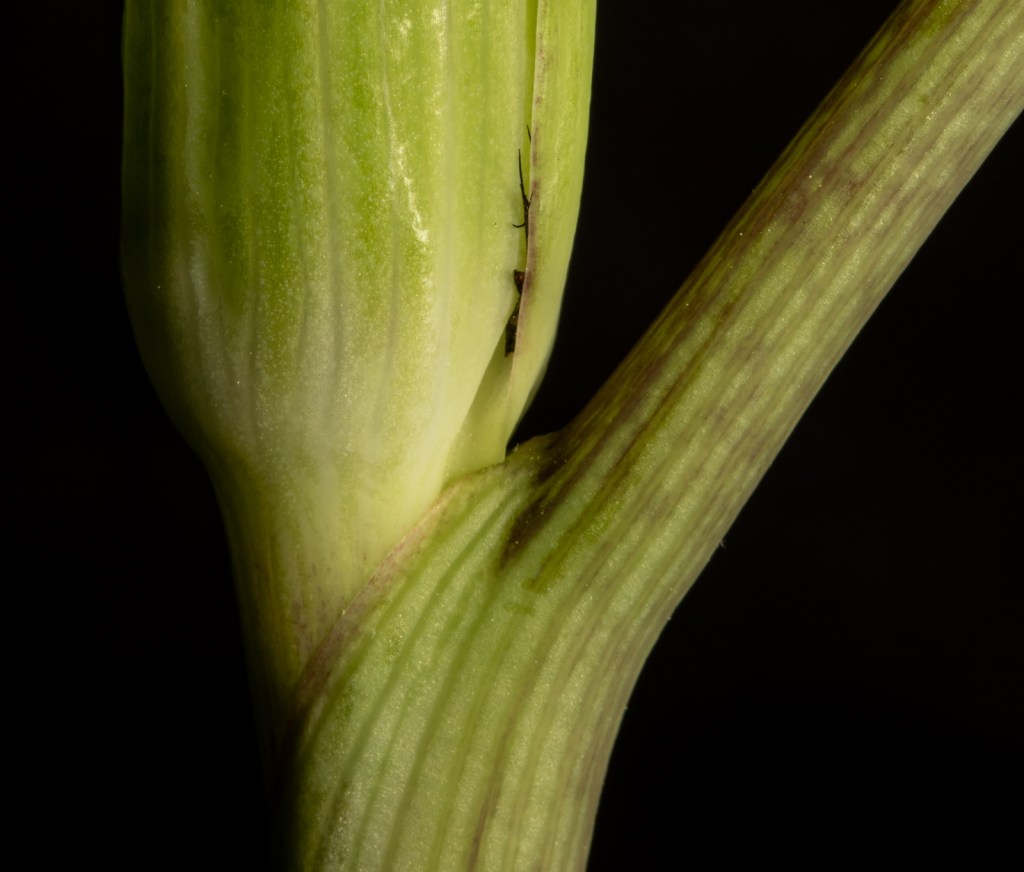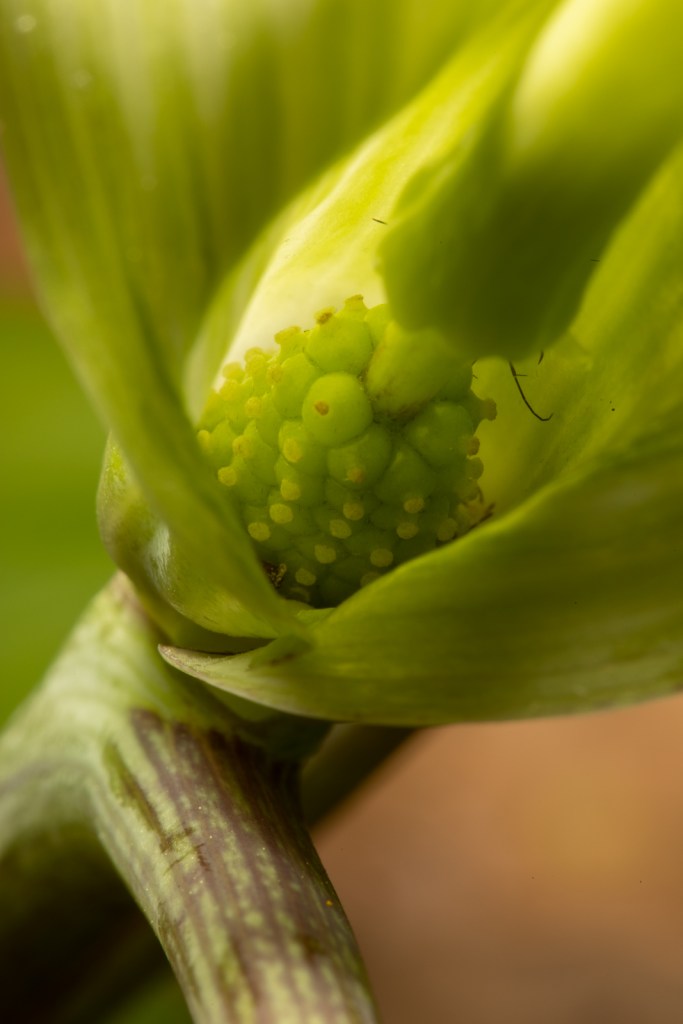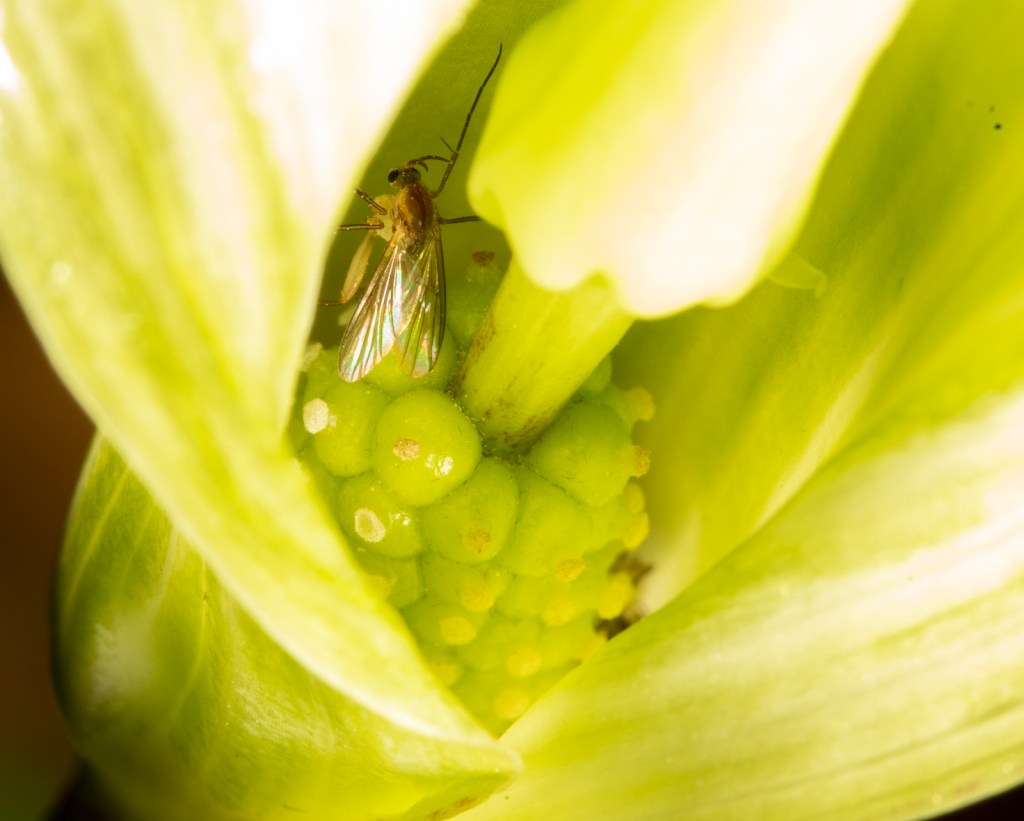In the Spring a fuller crimson comes upon the robin’s breast;
In the Spring the wanton lapwing gets himself another crest;In the Spring a livelier iris changes on the burnish’d dove;
~Alfred, Lord Tennyson
In the Spring a young man’s fancy lightly turns to thoughts of love.

I’ve been meaning to take a look at this more common backyard flower for a couple weeks now, ever since the Siberian iris (Iris siberica) began blooming in our yard. It’s almost done now, but the native blue flag iris (Iris virginica) is just beginning to open up in big numbers in our pond, so we should have irises around for a number of weeks yet.
Iris is one of those flowers that a lot of people have in their yard, so it might be a little more accessible to some to take a closer look at than wood poppy or Jack-in-the-pulpit. And it has large parts that are fairly easy to see… but they’re a little bit complicated, and figuring out which parts are which was more challenging than I expected!
As usual, I started with a hunt for the sepals. But my typical sepal-finding technique, seeing which parts enclosed the flower before opening, didn’t work quite as well as it has for some of the others flowers I’ve examined. The iris flower emerges from a swollen fold in the leaves of the plant (there’s probably a proper botanical term for this but I don’t know what it is!).

I was pretty sure that the green around the flower was leaf and not sepal. So I had to refer back to the real definition of a sepal, which is the outer whorl of the corolla (petals + sepals). Here’s the base of the flower where the sepals and petals join the stem:
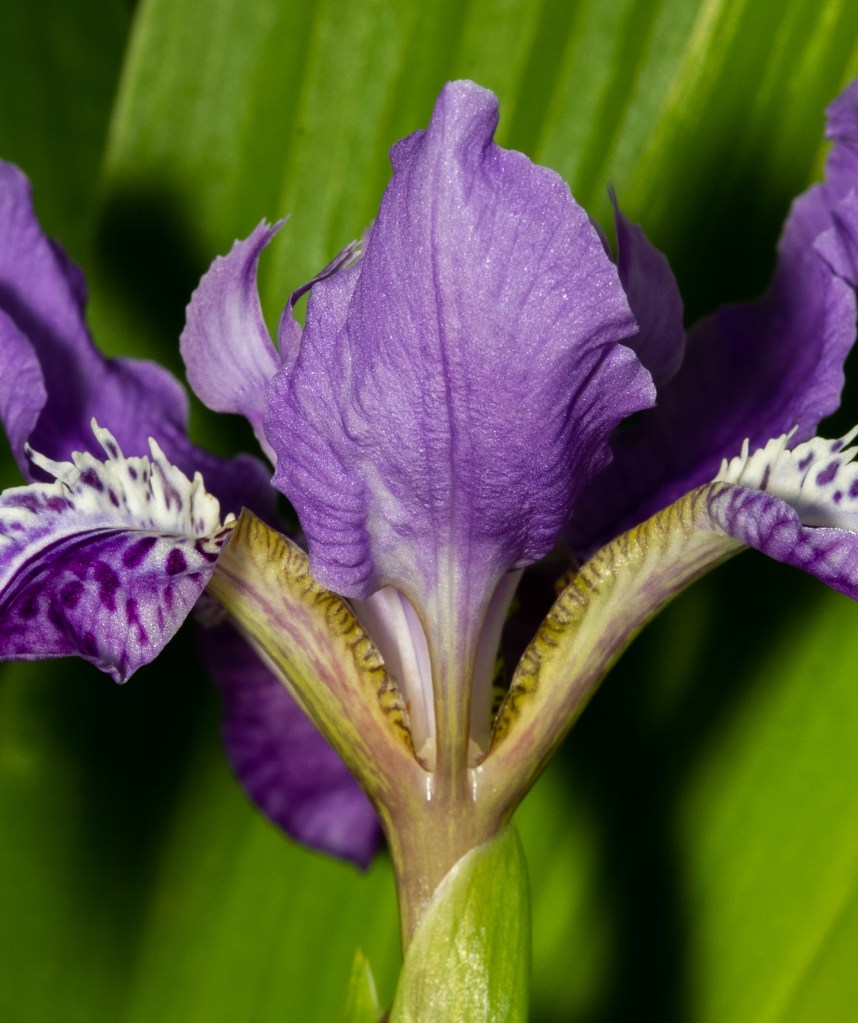
This was still confounding, as it looks like all six parts of the corolla are attached at the same level on the stem. Finally, I had to give in and check out a favorite flower reference, A Guide to Enjoying Wildflowers by Donald and Lillian Stokes. According to Stokes, the three larger and frillier parts are the sepals and the smaller, more upright ones are the petals.
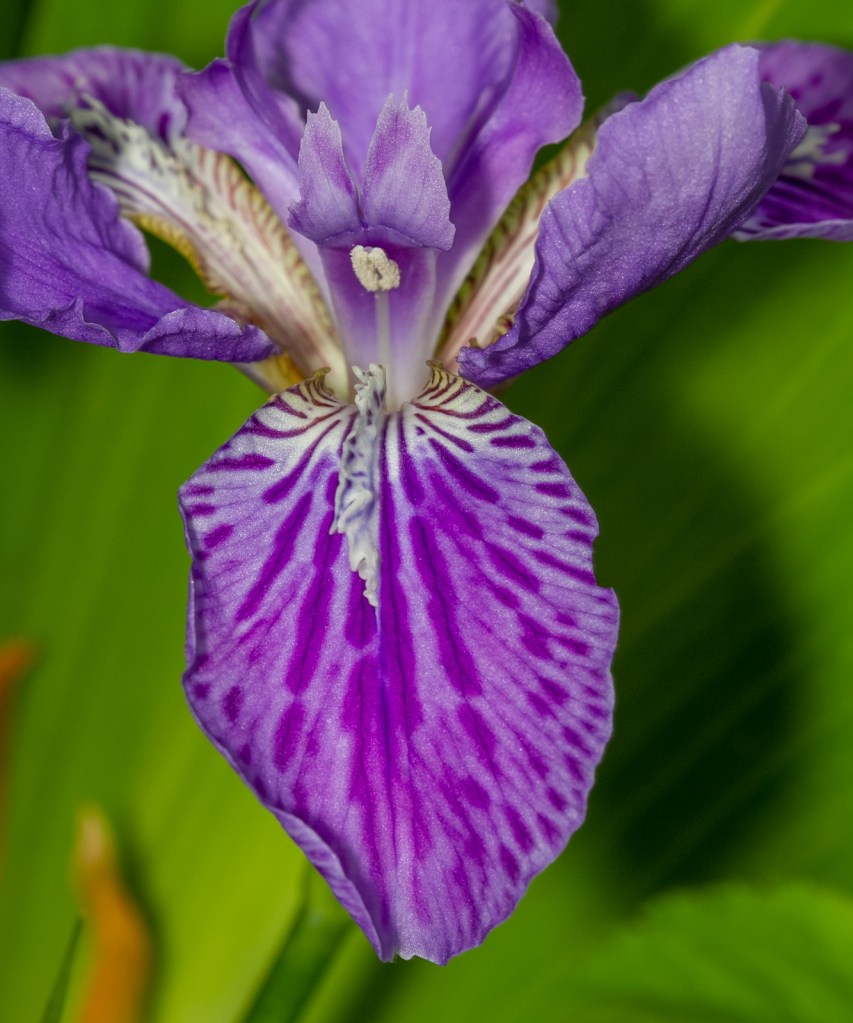
So with an iris, it seems the showiest “petals” are actually sepals! I found another good botanical word to describe this: the sepals are “petaloid.” The three petals are the slightly more modest, plainer parts situated between the sepals (you can see them well in the very first picture).
I felt like I needed a little more proof to help me understand this all better, so I went out for a look at our blue flag iris, which is just beginning to open up and had a better variety of flower buds.
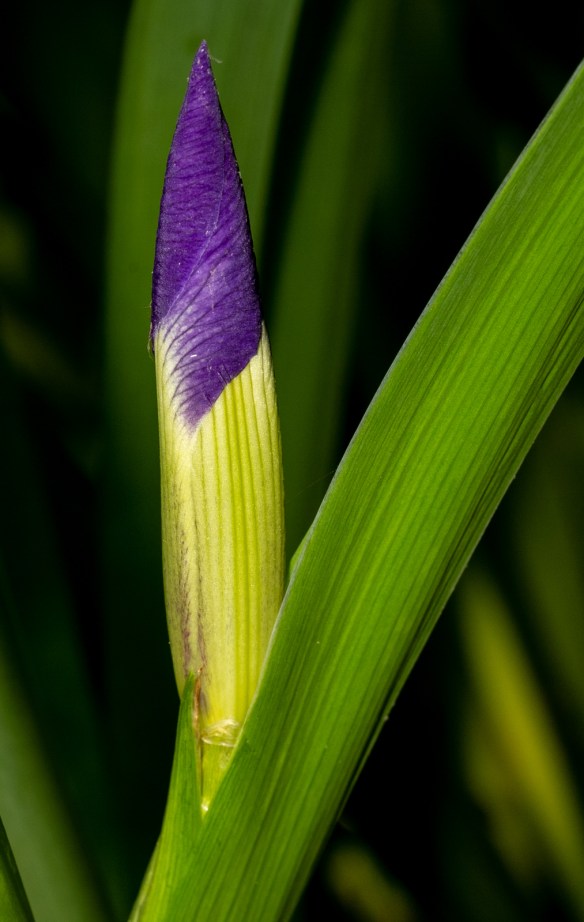
On this larger flower bud, note the green color at the base of the sepals. If you refer back to the photo of the base of the flower, you can see how there is some green at the outside base of the sepals that is lacking on the petals. This is the case on the open blue flag iris flowers as well. This helped me feel more confident in what I read in the Stokes guide – that the larger, showier petal-like structures are the sepals. Phew. Sepals are definitely the toughest!
The reproductive structures in an iris are also a bit different from some of the other flowers I’ve looked at. The stamen has the fairly typically eye shadow applicator appearance, but it hides under another petal-like structure. It starts out fairly elongated and smooth, but shrinks and shrivels as it produces its white pollen (see below).

So what’s the petal-like part above the stamen? It turns out that’s the pistil. Or more technically, applying my new vocabulary, a petaloid pistil. The curved lip directly above the anther (pollen-producing part of the stamen) is actually the stigma. The feathery bit above the stigma (the end of the petaloid part) is part of the style (the part that connects the stigma to the ovary). As a pollinator crawls down the “throat” of the flower, following the striped nectar guides on the sepal, any pollen it’s carrying on its back is scraped off by the stigma. Then it hits the anther and picks up more pollen to carry on to the next flower. Mike described this process well in a post about one of our native iris species, the crested dwarf iris, in a post from a few years ago. In both the crested dwarf iris and the blue flag iris, the pistil lays tightly against the sepal, so a pollinator really has to force its way in. On the Siberian iris, the pistil is more upright, providing easier access to the stigma and anther, but perhaps it is less efficient at ensuring pollination?
If all goes well, the flower is pollinated and a pollen tube grows down the petal-like style to the ovary. In our yard, many of those ovaries are already beginning to swell.
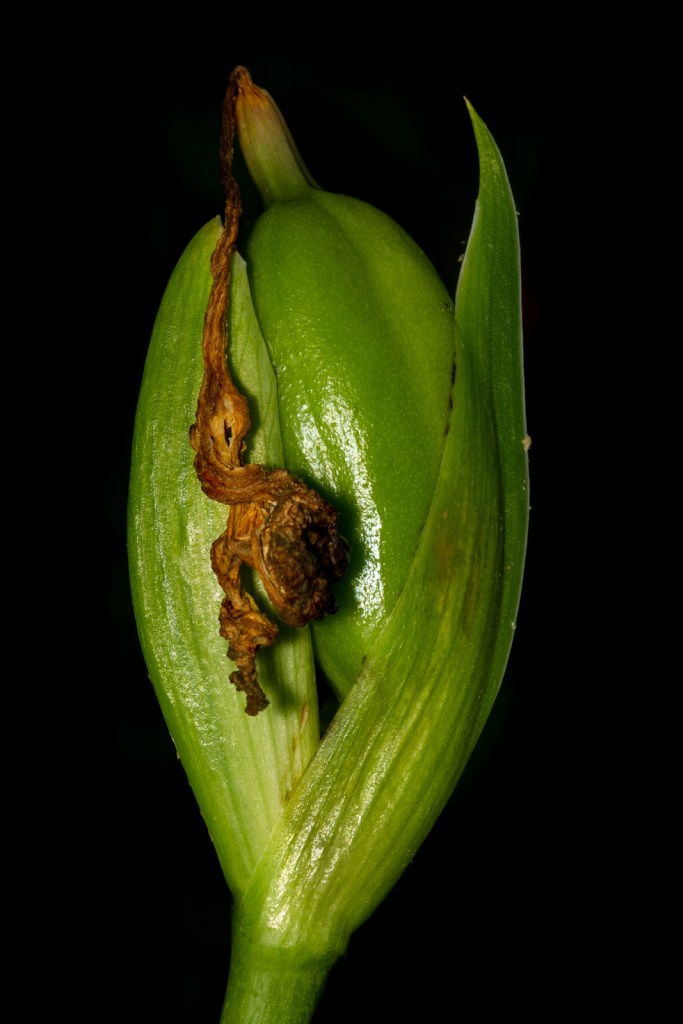
Inside, the ovules are developing, getting ready to seed in the next round of iris.
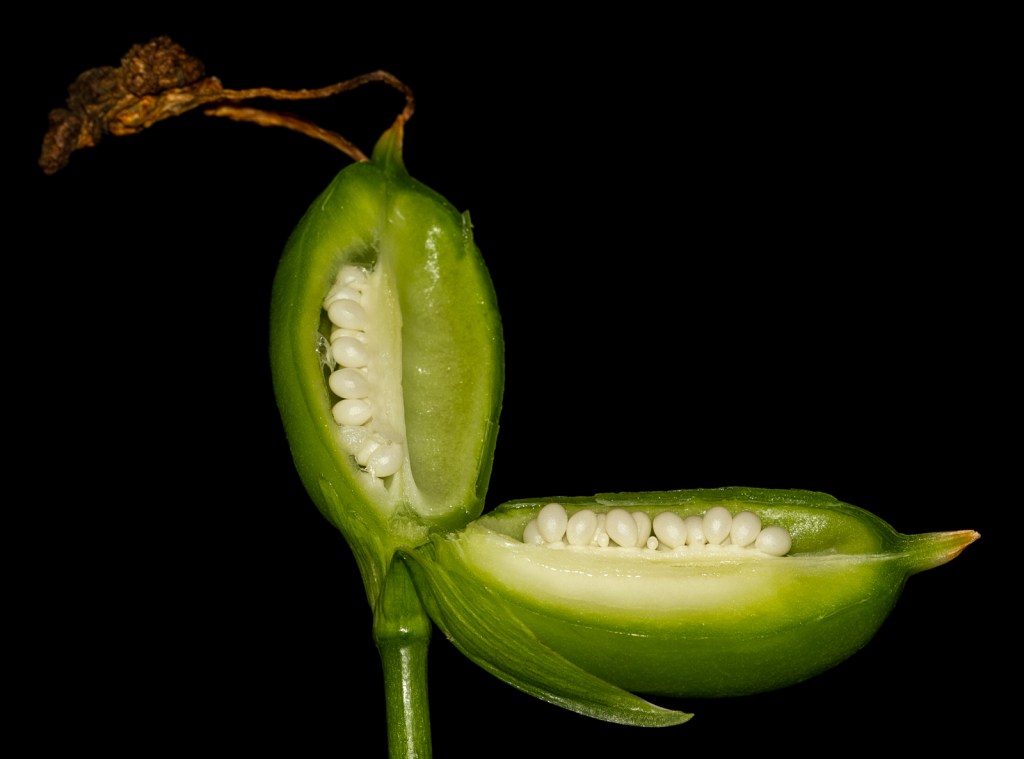
Of course, this species tends to spread more easily via underground rhizomes, making it a prolific perennial in our yard!





